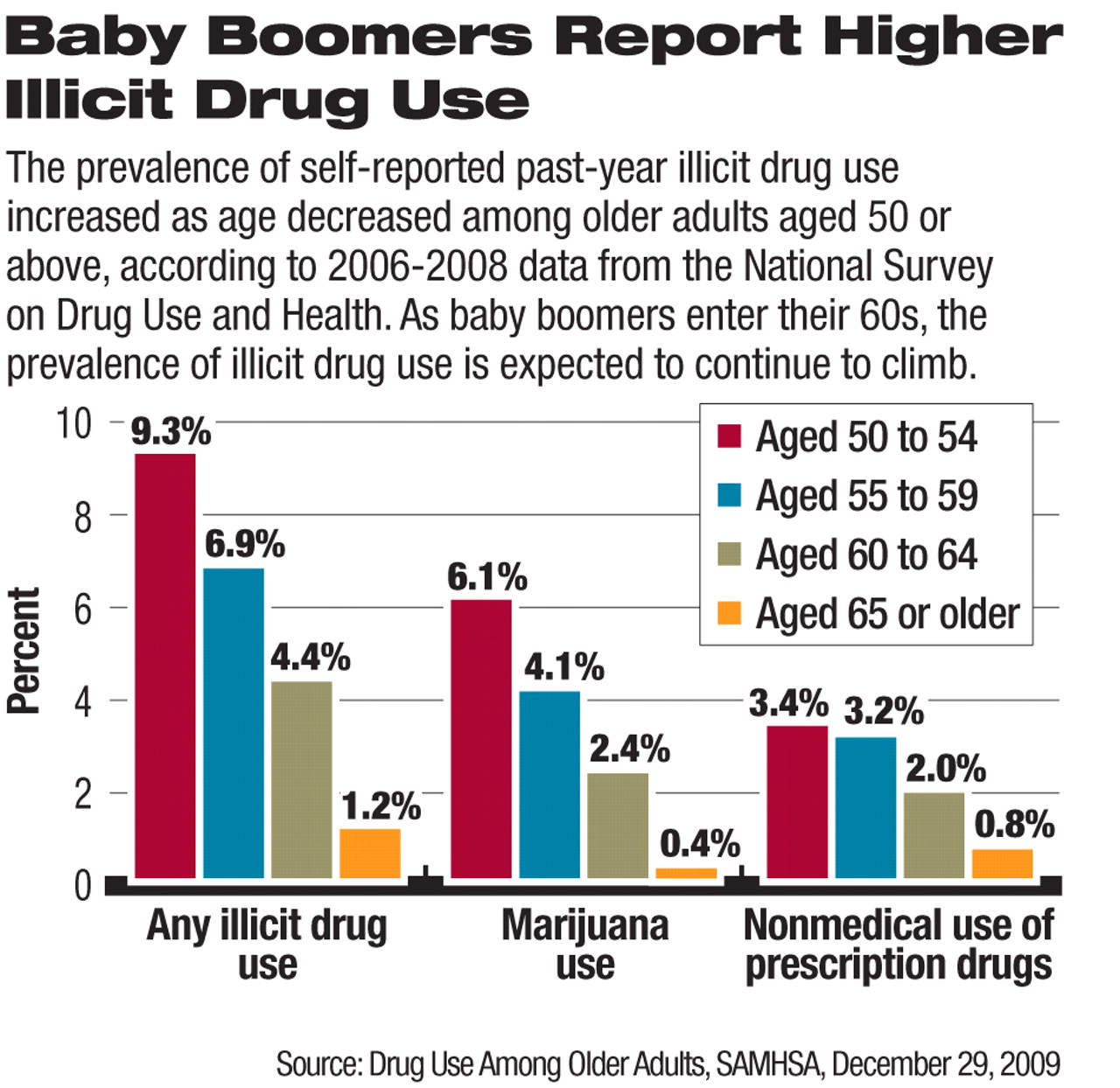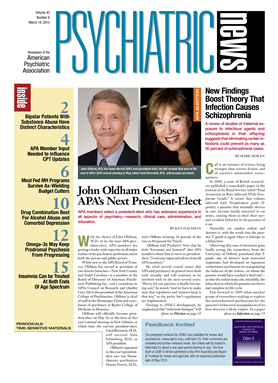Nearly 5 percent of U.S. adults aged 50 or older used an illicit drug in the year before a recent survey, according to a report by the Substance Abuse and Mental Health Services Administration (SAMHSA).
The estimate was based on data collected from 2006 to 2008 in the National Survey on Drug Use and Health, a nationwide survey in the community setting that asked people aged 12 and older about their use of illicit drugs in the past year. In the survey, illicit drugs are defined as marijuana/hashish, cocaine (including crack), inhalants, hallucinogens, heroin, and prescription drugs used for nonmedical purposes.
An estimated 4.3 million people in the United States aged 50 and above (4.7 percent) reported having used any illicit drug. Marijuana was the most common substance used by this population, with a prevalence of 2.8 percent, followed closely by nonmedical use of prescription drugs, with a prevalence of 2.1 percent.
Men had a higher prevalence than women for the overall category of use of any illicit drugs and for the subcategory of using marijuana. For example, 4.2 percent of men and 1.7 percent of women reported marijuana use in the prior year. However, women had similar rates of nonmedical prescription drug use as men did. Among women aged 50 or older, 1.9 percent reported using prescription drugs for nonmedical reasons in the preceding year.
The patterns of illicit drug use showed significant variations by age within the 50-and-over population. The rate of illicit drug use rose sharply with younger age, which signals a generational difference in illicit drug use (see chart).
Marijuana use was reported by 6.1 percent of those aged 50 to 54, 4.1 percent of those aged 55 to 59, but only 0.4 percent of those aged 65 or older. Nonmedical use of prescription drugs was also more common in the 50-59 age group than in the 60-and-over age group.
As the baby boomers enter their 60s, SAMHSA predicts that the prevalence of illicit drug use will continue to climb in the coming decade, due largely to their more accepting attitude toward illicit drug use, an attitude formed in the 1960s and 1970s, when many of them were in their teens and 20s, and illicit drug use became a more visible part of the youth culture.
In turn, the demand for professionals trained to specialize in treating substance use disorders in older adults will almost certainly increase. The agency encourages health care providers to screen older patients routinely for substance use problems, including nonmedical use of prescription drugs.

